AUSTIN, Texas — May 2024 brought beneficial rain to Austin and especially our Highland Lakes system here in Central Texas. The reservoirs and dams along the Colorado River provide over a million people with water.
April showers? More like May rain
In recent years, lake levels have been generally low, as the region has dealt with widespread and consistent drought. But the combined storage from our two main reservoirs, Lake Buchanan and Lake Travis, has risen 13% in the past 30 days.

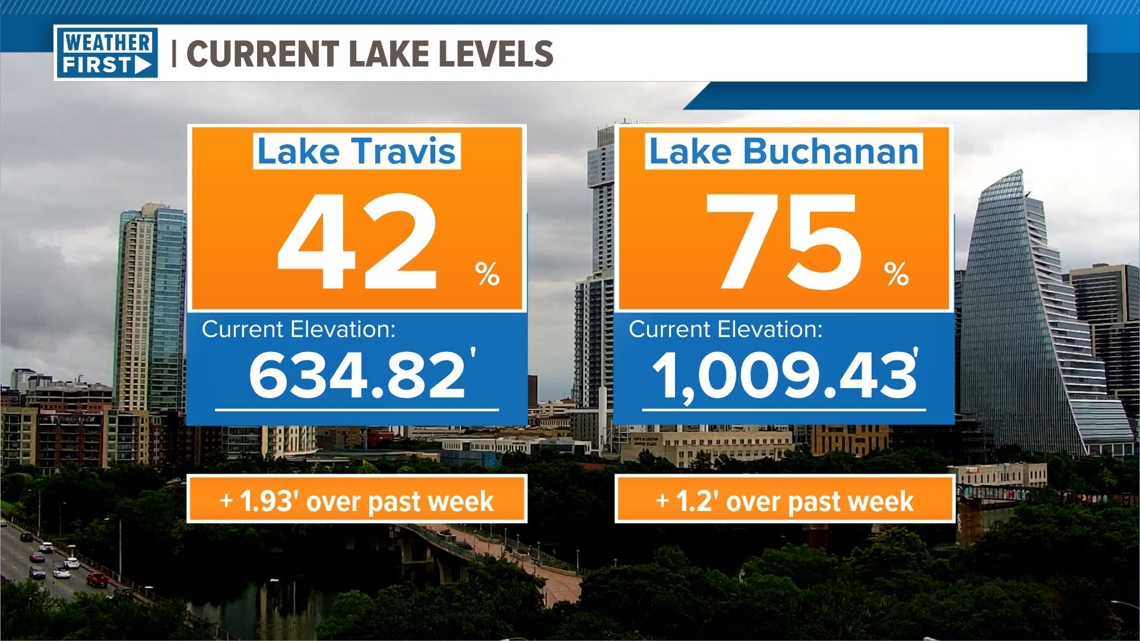
Lake Buchanan is 75% full as of June 5 and is expected to rise a bit more in the next several days. The last time its water level was close to 1,010 feet MSL was June of 2022.

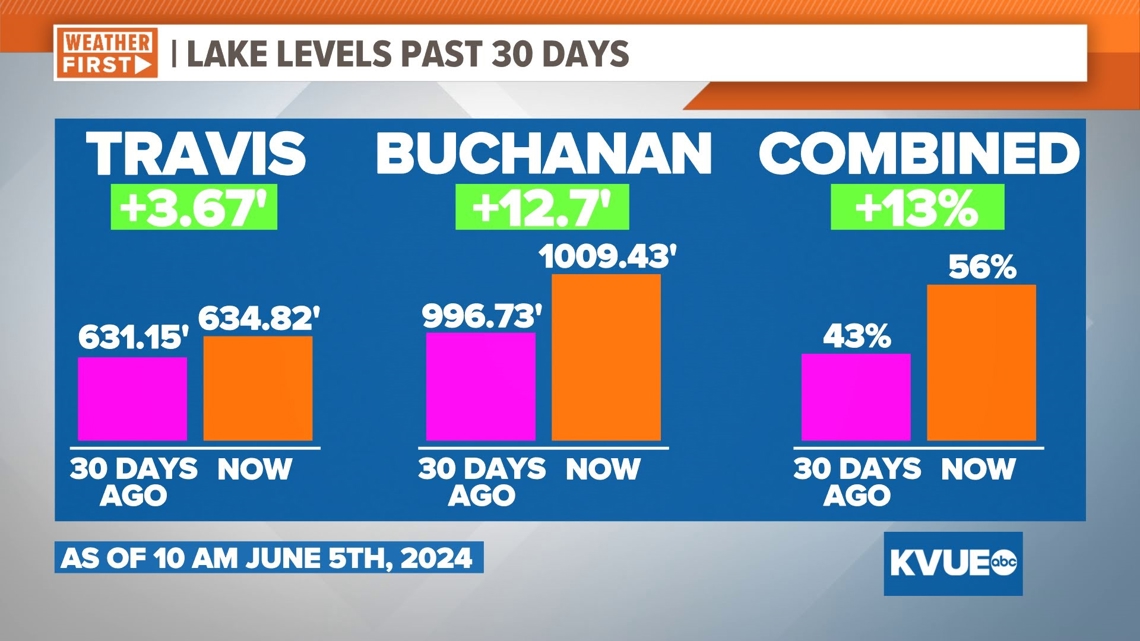
While the extra water is undoubtedly beneficial, it's not unprecedented to see a surge in water levels this time of year. The graph below shows the average water flow month-to-month for lakes Buchanan and Travis. May 2024 was a huge surge in comparison to the first few months of the year.
May is also historically our wettest month of the year, with about 5 inches of rainfall on average.

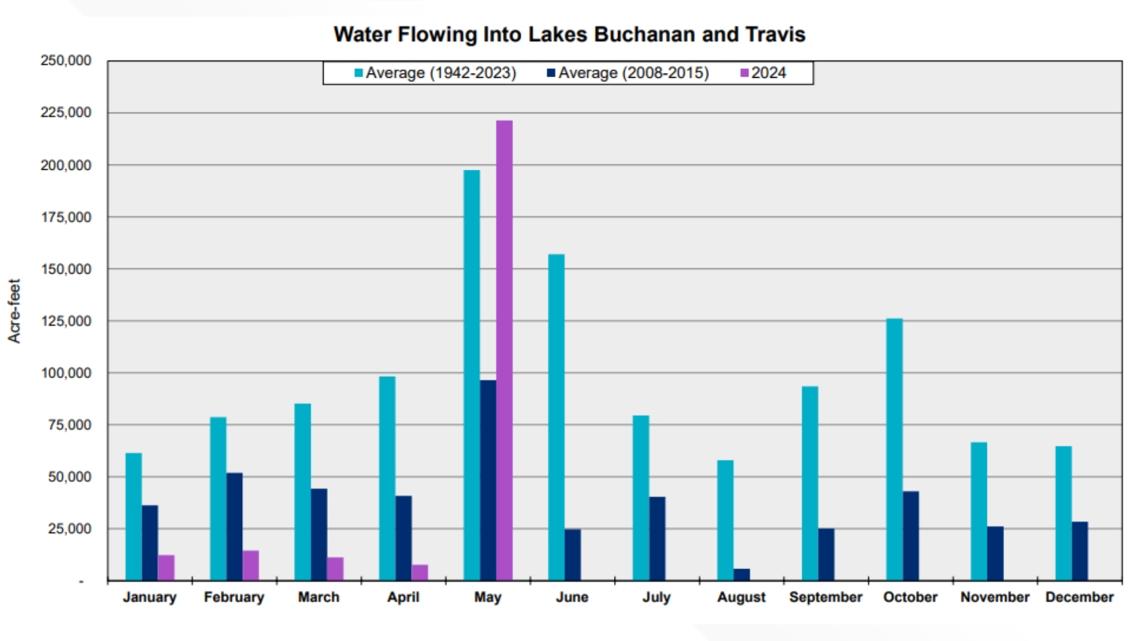
Water level projections for summer 2024
While Central Texas summers are usually characterized by hot and dry conditions, big rains are still possible. Below is the Lower Colorado River Authority's (LCRA) water level projections based on varying weather conditions through the end of the year.

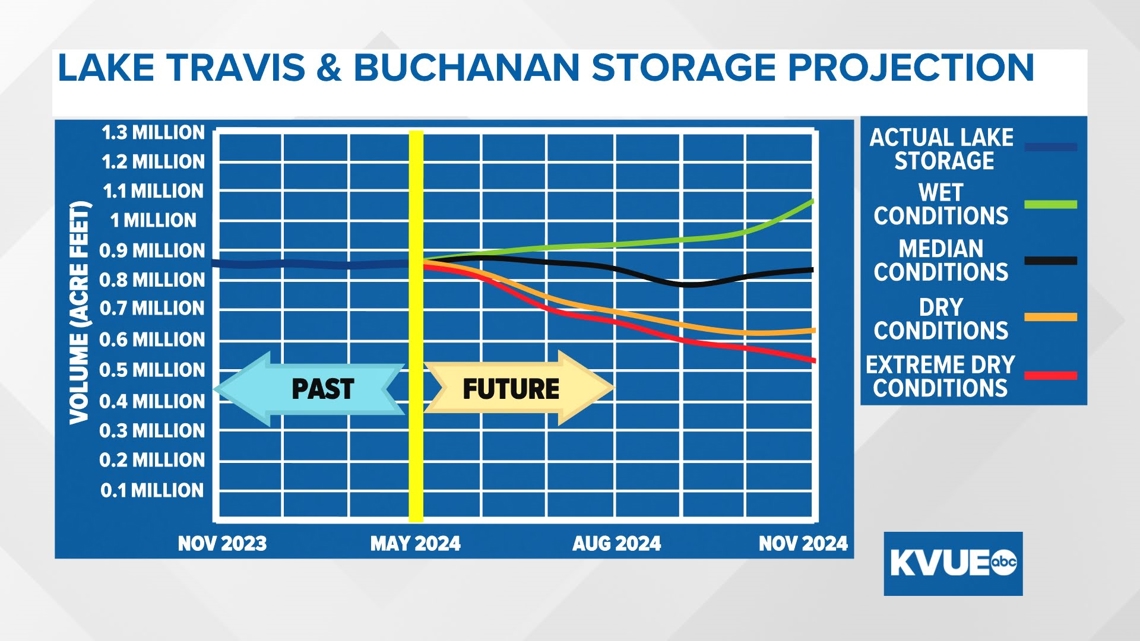
If we continue to see wet conditions or median conditions, water volumes stay about the same. Dryness and extreme dryness will continue to cause a gradual decline.
It may seem obvious that we need rain to keep lake levels higher, but historically in Central Texas, droughts are eradicated by a burst of heavy rains, rather than consistent, smaller rounds of rain.
Will hurricane season help or hurt us?
As for big rains, an overactive hurricane season has been forecasted for 2024. But will we see action here in the Austin area? The answer is always the same: we'll have to wait and see.
Throughout 2024, drought issues have subsided east of Austin, while severe-extreme drought conditions continue in portions of the Hill Country.

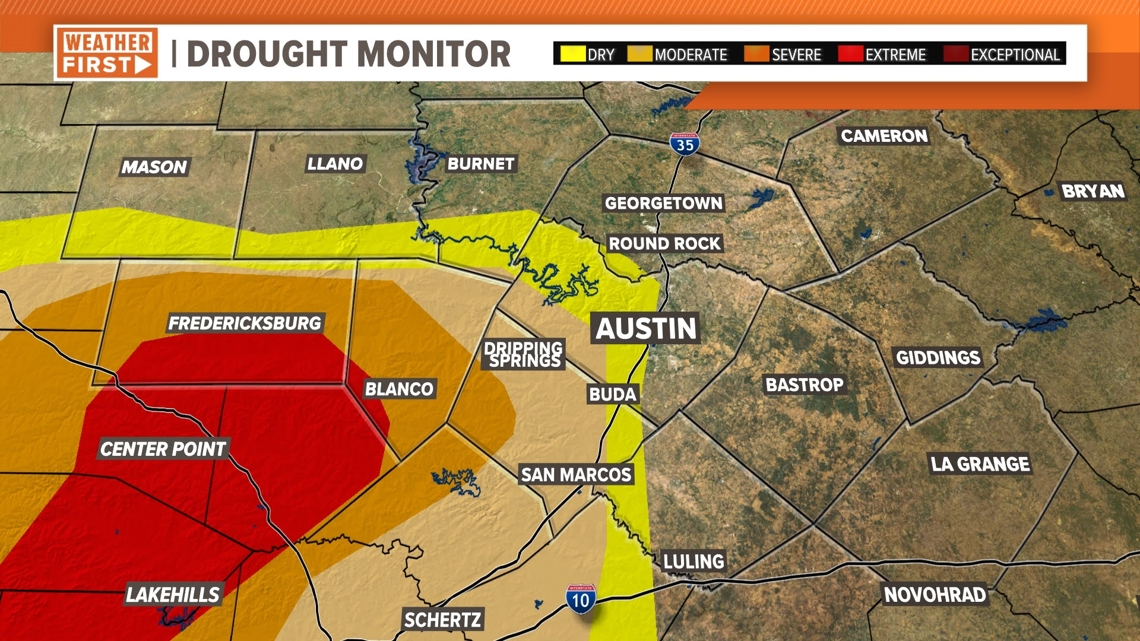
The National Oceanic and Atmospheric Administration (NOAA) is predicting that the number of named storms, hurricanes and major hurricanes will all be above-average during the 2024 hurricane season. More storms in the Gulf and Atlantic give Texas a better chance of seeing some sort of activity, whether that be a landfall along the coast or fringe impacts.
However, accurately forecasting the exact amount of tropical impact Texas will see throughout the next six months is nearly impossible.

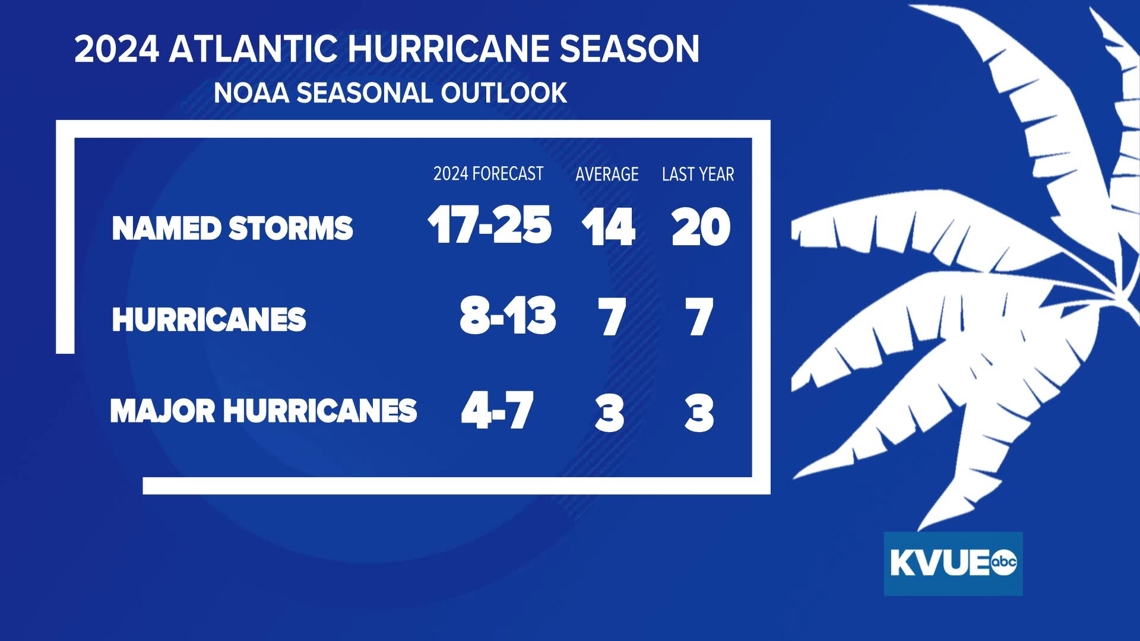
Throughout the next several months, climate scientists are forecasting a shift from our strong El Niño last year back to La Niña by the fall months. This means we will be in a neutral phase over the summer, where average sea surface temperatures are in a near-normal range.
The last three years we recorded a transitional summer from strong El Niño to strong La Niña were 1998, 2010 and 2016. In both 1998 and 2010, Texas had significant tropical storms make landfall south of Houston: TS Charley (1998), TS Frances (1998) and TS Hermine (2010). In 2016, there was no tropical activity recorded in Texas.
There may be a small correlation there, but more data is needed.
Historical tropical rainmakers
If Texas is able to get a big tropical rain during this upcoming hurricane season, it will help uphold lake levels for a long time.
But the rain will have to fall in the right place, geographically. Hurricane Harvey dumped record-level rain in the Coastal Plains in 2017, but since a majority of the rain did not make it into the Hill Country, Lake Travis ended up with a net loss in water from August to September.
But Tropical Storm Bill in June of 2015 was able to shift far enough west to favor the Highland Lakes system, rising 32 feet throughout June.

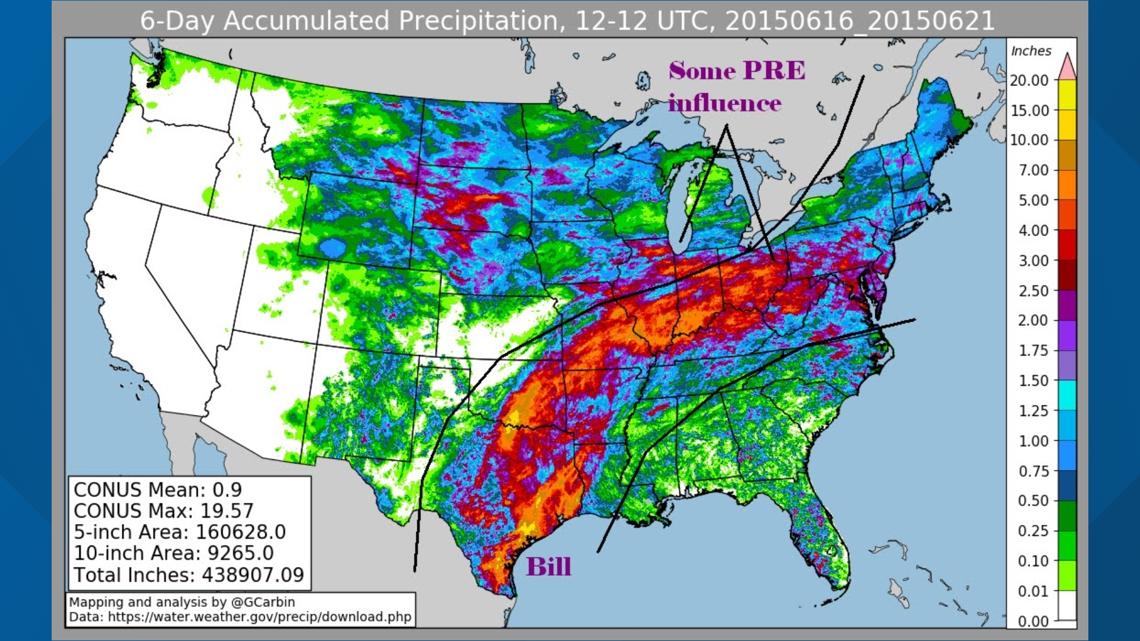


Tropical Storm Bill wasn't the only time this has happened. Historical data from 1952 also shows a considerable recharge in Lake Travis's water supply from August to September due to an unnamed weak tropical system.

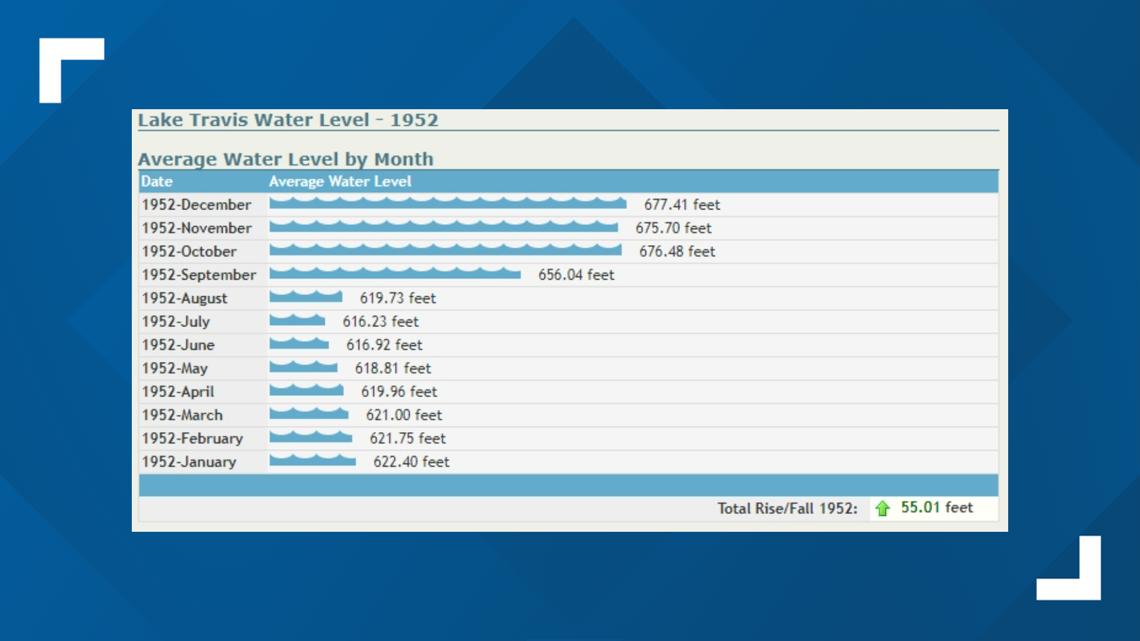
A report titled "Hurricanes Affecting The Texas Gulf Coast" from the Texas Water Development Board in 1969 said, "The great central Texas storm of September 9-10, 1952, is attributed to an easterly wave, a type of tropical disturbance on which hurricanes frequently form. In Blanco and Kendall Counties, totals of 20 to 26 inches of rain fell in 48 hours as a result of this tropical system."
Takeaways
All things considered, to keep water levels at lakes Buchanan and Travis on the up and up through the rest of this year, it would be more beneficial to receive "big rains" from thunderstorms near the lakes or a tropical system. Historically, this has been the solution to drought and low water levels in the past and will stay that way for the future.
An above-average 2024 hurricane seasonal outlook and comparing past hurricane seasons where strong El Niño to strong La Niña was recorded would also suggest that Texas has a greater likelihood of experiencing some sort of tropical impact over the next six months.

